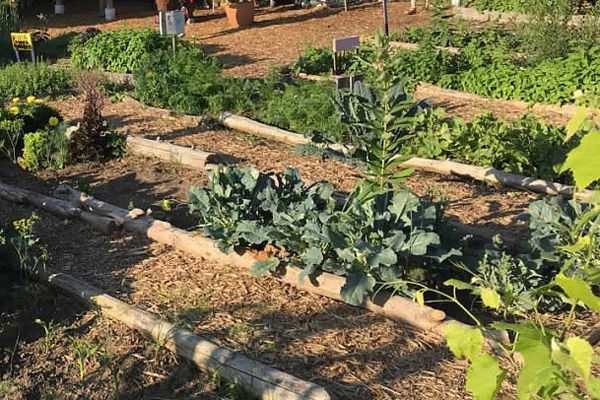Little Known Facts About City Blooming.
Little Known Facts About City Blooming.
Blog Article
The 7-Minute Rule for City Blooming
Table of Contents3 Simple Techniques For City BloomingThe 7-Second Trick For City BloomingLittle Known Questions About City Blooming.What Does City Blooming Mean?City Blooming Things To Know Before You Buy
Intrigued in expanding food for sale in the City of Chicago? Below is a list of regularly asked inquiries regarding the guidelines and regulations that growers should consider when intending an urban agriculture project.
The zoning modification does not change any various other codes taking care of composting, building permits, buying or leasing City possessed residential property, company licenses or environmental contamination. There are existing codes that manage these problems and they remain in complete effect and may apply to your project. Community yards are usually had or handled by public entities, civic organizations or community-based organizations and maintained by volunteers.
Urban ranches expand food that is intended to be offered, either on a nonprofit or for-profit basis. Due to their business function, metropolitan ranches call for a company certificate.
Some Known Questions About City Blooming.
The amount of garden compost product can not surpass 25 cubic backyards at any kind of offered time according to the criteria in 7-28-715 of the City's Municipal Code. Due to the fact that the dirt at the majority of new yard websites needs changing, garden compost, soil, wood chips, or other materials can be gotten to construct or improve the expanding area.

If a building authorization is required after that the hoophouse will be taken into consideration an accessory structure. You can learn even more about the building authorization requirements by calling the Division of Structures. The 25,000-square-foot dimension restriction is planned to avoid a single neighborhood garden from controling an offered block or diminishing the block's existing household or commercial character.
The limit does not apply to yards situated in Public Open Space (POS) districts. Can there be more than one area garden that is 25,000 square feet on a single block? Fencing is not required, nevertheless, gardens that have huge vehicle parking areas may be required to mount secure fencing or various other landscape design features.
City Blooming - Truths
B1 & B2 areas call for that all business usage tasks be conducted inside your home. Is secure fencing required for urban ranches? Fencings might be needed, along with landscaping and screening, for specific parking areas and outside work or storage space areas depending on place and the specific activity taking place.
Urban ranches require structure permits and zoning approvals prior to construction (urban gardening). Various other kinds of city evaluation may be required depending on details structures, activities, size, landscape design, licensing, public health and stormwater monitoring concerns.
The Division of Service Matters and Consumer Defense can assist figure out the particular kind of business permit that's required. Off road auto parking is needed for the majority of commercial projects in Chicago. The required number of car park areas is based on the number of employees working on website and not the square video of the growing room.
The Ultimate Guide To City Blooming

An urban farm can market compost product created on website, nevertheless, the procedure has to comply with the policies in 7-28-715 of the Chicago Municipal Code. Aquaponic systems are allowed indoors on urban ranches in lots of zoning areas.
As much as five hives or nests of honey bees might be maintained as an accessory use. Beekeepers should register with the Illinois Department of Farming. For additional information concerning the proposed zoning amendment you might speak to the Department of Housing and Economic Advancement, Bureau of Planning and Zoning at 312.744.8563.
Farming in cities and urban areas A city ranch in Chicago. Urban agriculture refers to various practices of growing. https://worldcosplay.net/member/1784867, handling, and dispersing food in urban locations. The term likewise puts on the location tasks of pet husbandry, tank farming, beekeeping, and horticulture in a metropolitan context. Urban farming is differentiated from peri-urban farming, which occurs in country locations beside suburbs.
How City Blooming can Save You Time, Stress, and Money.
It can involve a movement of natural cultivators, "foodies" and "locavores", that seek to create social media networks founded on a common ethos of nature and neighborhood holism. These networks can create using formal institutional support, coming to be incorporated right into regional town preparation as a "transition town" movement for lasting urban growth.
The much more direct access to fresh vegetable, fruit, and meat products that may be know via urban farming can improve food protection and food safety while lowering food miles, causing reduced greenhouse gas exhausts, thereby contributing to environment change mitigation. Several of the initial proof of urban farming comes from Mesopotamia.
Report this page